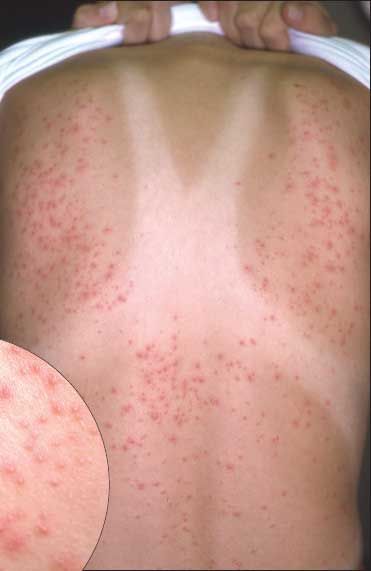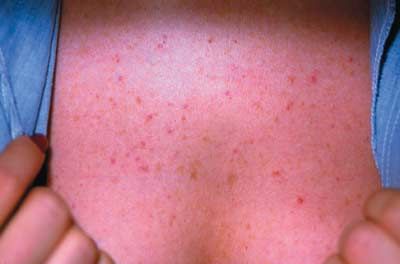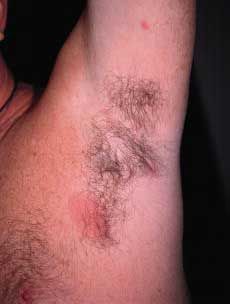- Clinical Technology
- Adult Immunization
- Hepatology
- Pediatric Immunization
- Screening
- Psychiatry
- Allergy
- Women's Health
- Cardiology
- Pediatrics
- Dermatology
- Endocrinology
- Pain Management
- Gastroenterology
- Infectious Disease
- Obesity Medicine
- Rheumatology
- Nephrology
- Neurology
- Pulmonology
Folliculitis: Part I
Here: a close-up look at gram-positive and -negative cases of folliculitis.
Gram-positive folliculitis. The lesions of gram-positive folliculitis are tender and erythematous. Diabetes and obesity may predispose to this infection. Staphylococcal folliculitis is gram-positive but resembles gram-negative folliculitis and needs to be differentiated by culture. Treatment with cephalosporin antibiotics is generally effective.
Gram-negative folliculitis. Pseudomonas folliculitis, or “hot tub” folliculitis, produces painful pustules that typically affect the trunk. This infection is usually self-limited and often clears in 2 to 10 days. Treatment is not necessary in most cases. For patients with persistent infection and for those who are immunosuppressed, treatment with an oral fluoroquinolone is recommended.
On the following pages, you will find images of both types.
Gram-positive.This mildly tender rash on the lower abdomen of a 59-year-old obese man with type 2 diabetes mellitus is staphylococcal folliculitis.

Gram-positive. This tender, pruritic eruption on a 10-year-old boy's buttocks also is staphylococcal folliculitis.

Gram-negative. This painful rash confined to the trunk of a 43-year-old woman erupted suddenly. Culture grew Pseudomonas aeruginosa.

Gram-negative. The clinical clue to the diagnosis of Pseudomonas folliculitis in this patient was the confinement of the eruption to the area in contact with the seat of a hot tub.

Gram-negative. A 19-year-old woman had a slightly tender acneiform eruption on the trunk that spread to the extremities. A culture grew Serratia marcescens.

Gram-negative. The appearance and intertriginous location of the unilateral rash in this patient suggested staphylococcal folliculitis. A culture confirmed the diagnosis of Pseudomonas folliculitis.

